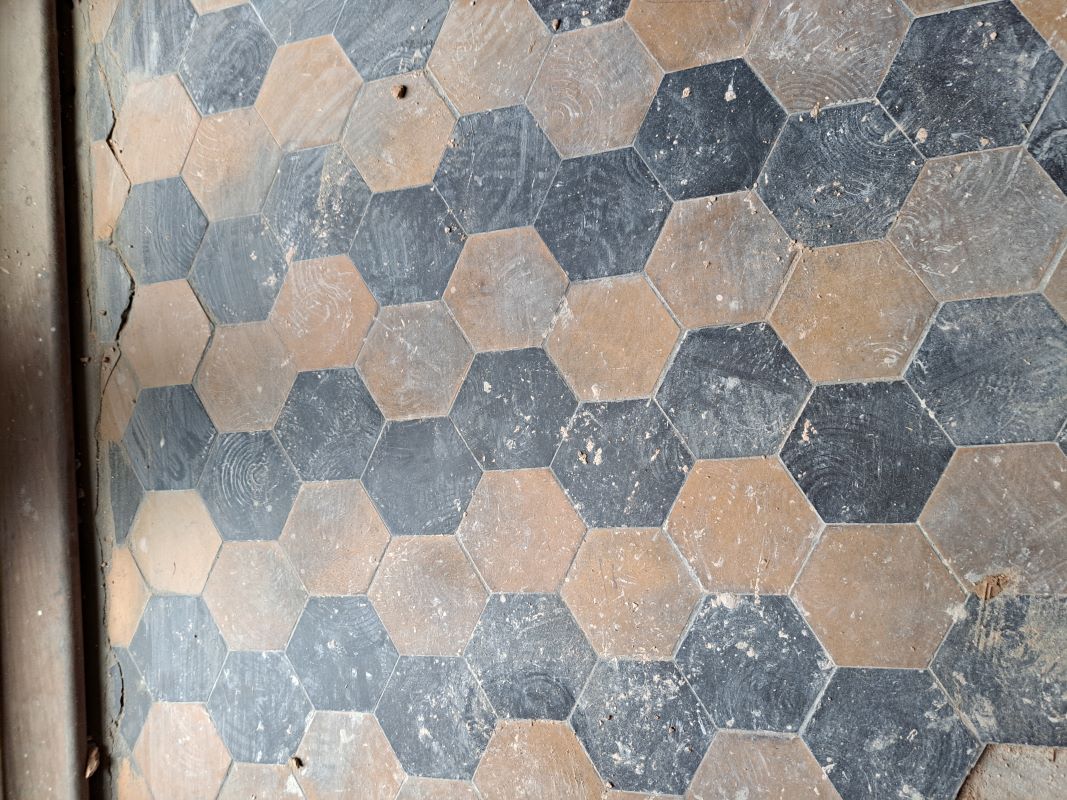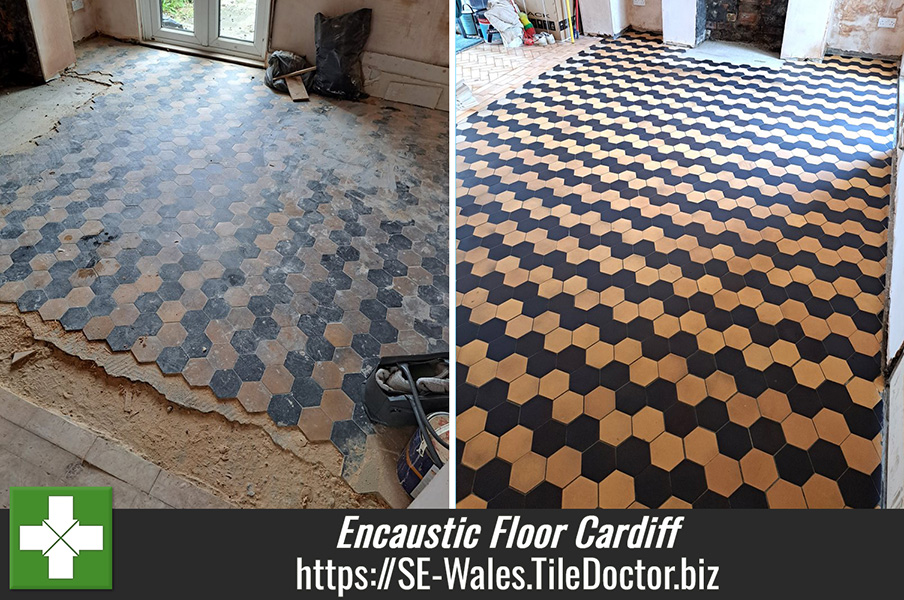Tile Doctor was contacted by a client who had recently purchased a 1920’s property in Cardiff with a Encaustic Tiled floor that was in a bad state. The property was having major building works carried out to bring it back to its original condition and this included the tiled floor.

The floor in general was in a very bad condition with builders’ plaster and cement staining in many areas, and to make things worse a lot of tiles were missing and damaged. Normally replacing tiles isn’t a problem but these particular tiles were very uncommon in colour shape and size and the pattern was very reminiscent of the Art Deco designs that were fashionable when the house was built.
 |
 |
Having surveyed the floor I came up with a restoration plan and explained that it should be possible cut the shape out of a larger tile and try to match the colour as best as possible. Once the clients and I decided on the closest colour I was then able to plan the restoration project in detail and provide an accurate quote.
Cleaning and Repairing an Art Deco Encaustic Tiled Floor
Before we could even contemplate cleaning the floor it had to be whole so the 1st job was to prepare the damaged areas for tile replacements. This involves carefully removing the damaged tile and cleaning up the foundation beneath ready to accept a replacement.
Next step was to cut all the replacement tiles to replicate the octagonal shape and size then dry fit them to check if any adjustments were needed. Once all the replacement tiles had been cut, they were fixed in place with flexible adhesive and then grouted. The floor then needed time to set before cleaning so that was it for the first day.
On day two work stated to deep clean the encaustic tiled floor of previous sealers and paint. To do this it was covered in a strong dilution of Tile Doctor Pro-Clean combined with Tile Doctor Nanotech HBU Remover for extra power. This was left to soak into the floor for a good fifteen minutes before scrubbing it by hand with a black scrubbing pad cut to size. Working it into the floor like this is less aggressive than with a machine and ensures 100% coverage with no gaps in the cleaning. Once done the floor was rinsed and the soiling extracted with a wet vacuum.
The next stage was to clean the floor working at 1 m2 at a time, again with a coarse black pad cut from a 17″ Tile Doctor pad. This time the pad was used to work in Tile Doctor Grout Clean-up into the surface to remove the cement smears. As work progressed the floor was rinsed with fresh water and all the residues vacuumed away. Working this way allowed me to keep progressing until I was satisfied the whole floor was clear and as clean as it ever could be.
The floor was then left for two days so it would be completely dry for the next step of applying a protective sealer.
Sealing an Art Deco Encaustic Tiled Floor
The client wanted a natural matt finish to the floor, so I had recommended sealing it with Tile Doctor Colour Grow which is a colour enhancing impregnating sealer that leaves a very durable matt finish.
Colour Glow allows for vapour transmission which is essential on old floors like this one that don’t have a damp proof membrane. The sealer soaks into the pores of the cement tile protecting it from within and ensure dirt remains on the surface where it can be easily cleaned away.

The clients were delighted with the results and relieved I was able to restore the floor as an original feature. They were told by other contractors that the floor would have to be removed and replaced at a substantial cost.
For aftercare cleaning I advised the use of Tile Doctor Neutral Tile Cleaner which is a mild yet effective tile cleaner that won’t impact the sealer.


Completing over 2,000 renovations every year, Tile Doctor is the largest and most respected restorative Tile, Stone and Grout cleaning network in the UK. They have perfected numerous related services so whatever or wherever your problem, call us on 0345 512 01222 for help and advice.